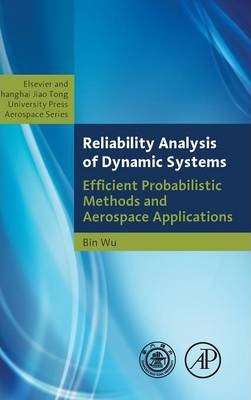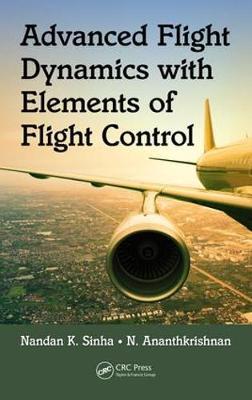Hybrid Anisotropic Materials for Structural Aviation Parts
Original price was: ₹19,386.00.₹15,508.80Current price is: ₹15,508.80.
ISBN: 9781439836804
Author/Editor: Yosif Golfman
Publisher: CRC Press
Year: 2011
1 in stock (can be backordered)
Description
Optimization of aviation and space vehicle design requires accurate assessment of the dynamic stability and general properties of hybrid materials used in aviation parts. Written by a professional with 40 years of experience in the field of composite research, Hybrid Anisotropic Materials for Structural Aviation Parts provides key analysis and application examples to help the reader establish a solid understanding of anisotropic properties, theory of laminates, and basic fabrication technologies.
Tools to ensure cost-effective, optimized fabrication of aircraft, satellites, space vehicles, and more…
With a focus on analytic modeling and dynamic analysis of anisotropic hybrid materials used in structural parts, this book assesses how and why design mechanisms either work or fail. It describes how current manufacturing techniques can apply alternative electronic and ultrasonic systems to improve the strength of an aircraft’s parts, reduce vibrations, and counteract deicing effects, among other vital requirements.
Presenting valuable case studies involving manufacturers such as Boeing and DuPont, this book covers topics including:
Nano composites, impregnation processes, and stress/strain analysis
New techniques for analyzing interlaminar shear distribution sandwich/carbon/fiber/epoxy technologies
Non-destructive methods, control technological parameters, and the influence of technological defects
Use of carbon-silicon nanotubes and ceramic technology
Strength criteria and analysis, and composite life prediction methodologies
Dynamic aspects and stability of jetliners and lattice aviation structures
Interlaminar shear stress analysis and possible failure
Fatigue strength and vibration analysis
This volume offers a useful, informative summary of the cutting-edge work being done in the field of high-performance composite materials, including fiberglass and carbon. With coverage of topics ranging from stress analysis and failure prediction to manufacturing methods and nondestructive inspection technology, it provides unique information to benefit a new generation of composite designers, graduate students, and industry professionals working with high-performance structures.
Additional information
| Weight | 0.612 kg |
|---|
Product Properties
| Year of Publication | 2011 |
|---|---|
| Table of Contents | Nanocomposite Automation Process Ceramic Technology in Space Programs Fractographic Model Prediction Deformations and Fatigue Strength Fiber Draw Automation Control Spray Deposition of Aerogels as a Thermal Insulation for the Space Shuttle Fuel Tanks Self-Sealing Fuel Tank Technology Development Deposition of the Thermal Insulation Fuel Tank of the Space Shuttle Vapor-Phase Deposition of the Thermoprotective Layers for the Space Shuttle Impregnation Process Impregnation Process for Prepregs, Braided Composites, and Low-Cost Hybrid Polymer and Carbon Fibers High-Strength, Low-Cost Polymer Fibers Hybrid with Carbon Fibers in Continuous Molding/Pultrusion Processes Strength Criteria and Dynamic Stability Develop a Validated Design and Life Prediction Methodology for Polymeric Matrix Composite History of Design and Life Prediction Methodology for PMC Strength Criteria for Anisotropic Materials Theoretical Prediction of the Forces and Stress Components of Braided Composites Nonlinear Correlation between Modulus of Elasticity and Strength Dynamic Stability Aspects for Hybrid Structural Elements for Civil Aircraft Dynamic Aspects of the Lattice Structures Behavior in the Manufacturing of Carbon-Epoxy Composites Dynamic Stability of the Lattice Structures Manufacturing of Carbon Fiber-Epoxy Composites, Including the Influence of Damping Properties Interlaminar Shear Stress Analysis Interlaminar Shear Stress Analysis of Composites: Sandwich/Carbon Fiber/Epoxy Structures Interlaminar Shear Strength between Thermoplastics Rapid Prototyping or Pultruded Profiles and Skin Carbon/Fiber/Epoxy Layers Developing a Low-Cost Method to Reduce Delamination Resistance in Multilayer Protection Systems Fatigue Strength, Stress, and Vibration Analysis Fatigue Strength Prediction for Aerospace Components Using Reinforced Fiberglass or Graphite/Epoxy Effect of Thermoelasticity for Composite Turbine Disk Strength Analysis of Turbine Engine Blades Manufactured from Carbon/Carbon Composites Stress and Vibration Analysis of Composite Propeller Blades and Helicopter Rotors NDE Methods Control Properties Ultrasonic Nondestructive Method to Determine the Modulus of Elasticity of Turbine Blades Nondestructive Evaluation of Parts for Hovercraft and Ekranoplans Dynamic Local Mechanical and Thermal Strength Prediction Using NDE for Material Parameters Evaluation of Aerospace Components Nondestructive Evaluation of Lightweight Nanoscale Structural Parts for Space Satellite Shuttle Noncontact Measurement of Delaminating Cracks Predicts the Failure in Fiber Reinforced Polymers Coating Process Protective Aviation Parts Developing a Non-thermal-Based Anti-Icing/De-icing of Rotor Blade Leading Edges Helicopter Rotor Blade Coatings Development Offers Superior Erosion Resistance and Deicing Capabilities Thermoplastic Reinforced Carbon for Large Ground-Based Radomes |
| Author | Yosif Golfman |
| ISBN/ISSN | 9781439836804 |
| Binding | Hardback |
| Edition | 1 |
| Publisher | CRC Press |
You must be logged in to post a review.






Reviews
There are no reviews yet.